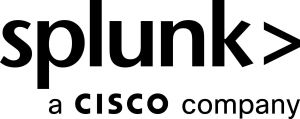Analyze IT Service Health
Your ITOps teams might work on incidents in a vacuum, lacking visibility and context into the health, dependencies, impact, and performance of all the IT assets, services, and commercial off-the-shelf (COTS) applications they are tasked with managing. Siloed and dispersed or even remote teams can own these assets and use different tools or dashboards for analysis. There is no centralized location for seeing all the data, much less surfacing relationships between applications and infrastructure, how these relationships affect services, and how all of this impacts the business. This tool sprawl and lack of complete visibility lead to large war rooms, slow troubleshooting, duplicate investigations, longer detection and resolution times, increased costs, and poor end-user experiences.
How can Splunk ITSI help with analyzing IT service health?
View IT assets and critical COTS application health in a single location
With glass tables in Splunk ITSI (ITSI), your ITOps teams can see the real-time health of company assets, KPIs, and the entities that support them. This includes commercial off the shelf (COTS) applications, warehouse, inventory, and supply chain management systems, which can often be black boxes. The Splunk platform provides out-of-the-box, easily customizable dashboards. Prebuilt content packs for business and SaaS applications like SAP and M365 provide preconfigured entity types, vital metrics, dashboards, KPI base searches, service templates, glass tables, and more so that your teams quickly and easily gain a single, end-to-end view. With color coding, service health can be analyzed at a glance. Not only can your ITOps teams tailor views by creating unique KPIs and customizable entity types, but they also have the ability to correlate the health of multiple components or tiers of technology in one view to better the health of the entire environment.
Easily see the health of services and troubleshoot faster
Service Analyzer within Splunk ITSI helps your teams view both the current health of their services, the overall service and infrastructure components, and visualize how they’re connected in a topological view. Machine learning helps teams quickly and consistently implement alert and incident detection and KPIs can be tracked by key dimensions.
When something’s gone wrong, ITSI can help you resolve issues faster by directing where to troubleshoot. Seamless correlation of log and metric data helps speed investigations, and you can quickly recognize service dependencies and identify the downstream impact of service degradation. You can identify the specific KPIs that are causing an issue, view and investigate relevant episodes for the service, conduct deep dives, and drill down into the service health of a KPI at an entity level. Additionally, you can compare the current state to the past to identify trends over long periods of time and identify any underlying issues that need to be addressed.
Identify key areas for improvement and track progress
View the performance metrics that you care about with out-of-the-box analytics and reporting in Splunk ITSI. You can quickly and easily identify key areas for improvement, like mean time to detect, mean time to respond, and alert noise reduction, and then track and report on progress. ITSI supports continuous improvement through reporting and analytics so you can ensure that your operations center, and therefore your business, is running as efficiently as possible.
Make the most of your Splunk investment for IT use cases
In the quest for the right analysis, dashboards and searches can grow organically over time and may not be as efficient as they could be. With Splunk ITSI, you can auto-summarize KPIs for more efficient analysis, saving you time and SVCs.
Use case guidance
- Troubleshooting service problems using ITSI Service Analyzer
- The ITSI Service Analyzer helps you quickly identify the root cause of the problem when a service is non-responsive or not running as intended.

